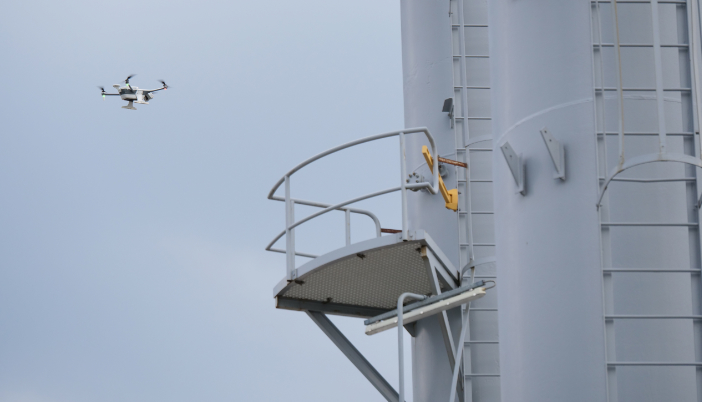With a first-of-its-kind FAA permission, Percepto now has the authorization to execute unmanned drone-in-a-box operations 200 feet above ground level without a pilot or visual observer on site. Doubling the altitude of highly automated Beyond Visual Line of Sight (HA BVLOS) drone operations in the US should enable greater operational flexibility to monitor larger areas and taller structures, including mapping and modeling use cases.
By taking advantage of the company’s automated detect and avoid (DAA) system, Percepto eliminates the need for remote pilots in command intervention if other aircraft are detected within the airspace. This automatic airspace deconfliction capability paves the way for future centrally controlled drone-in-a-box fleets of multiple sites.
While the FAA’s authorization is for a large Texas solar power plant only, Percepto will use it as a model for other industries, including oil and gas, mining, and utilities, to increase site efficiency through automated remote inspection operations. Percepto’s goal is to streamline preventive maintenance, drive efficiency, improve safety, and reduce operational costs.
In early 2022, the FAA published the Unmanned Aircraft Systems Beyond Visual Line of Sight Aviation Rulemaking Committee (UAV BVLOS ARC) report about its research into broadening safe, scalable, economically viable, and environmentally friendly UAS BVLOS operations that are not under positive air traffic control. Over the past five years, the FAA has also engaged in multiple pilot programs and partnership arrangements, such as the UAS Integration Pilot Program (IPP), Partnership for Safety Plans (PSPs), and, currently, BEYOND, to better understand the minimum performance criteria for safe UAS BVLOS operations.
In late 2022, the FAA granted Percepto a nationwide waiver for BVLOS operations, empowering US-based Percepto customers whose sites comply with the waiver’s criteria to benefit from remotely operated drones. The waiver also enables the expansion of the company’s automated drone inspection and monitoring without the wait for site-specific FAA approvals. Apart from the importance of Percepto’s technological advancements, last year’s waiver and the newest authorization also represent the result of FAA’s research, unveiling a promising future for BVLOS operations.
“Gaining this approval marks a significant milestone to provide remote and autonomous inspections at industrial sites, fulfilling Percepto’s mission to provide safe and reliable critical infrastructure,” said Percepto Policy & Government Affairs VP Neta Gliksman. “We are grateful to the FAA for their diligence in reviewing Percepto’s safety case, and we look forward to continue to support the critical infrastructure community across the US.”
Although Percepto’s authorization only allows drones to operate 200 feet above ground level BVLOS flights, BVLOS ARC’s proposes that, in the future, drones, not manned aircraft, have the right of way under around 400 feet. According to Dor Abuhasira, CEO and Co-Founder, “in 2023, we’ll see the fruits of FAA, with more nationwide BVLOS approvals and more highly automated BVLOS approvals. This process is the foundation for the next nationwide highly automated BVLOS approval—the holy grail we are waiting for—until a permanent BVLOS law will come into effect.”















Comments